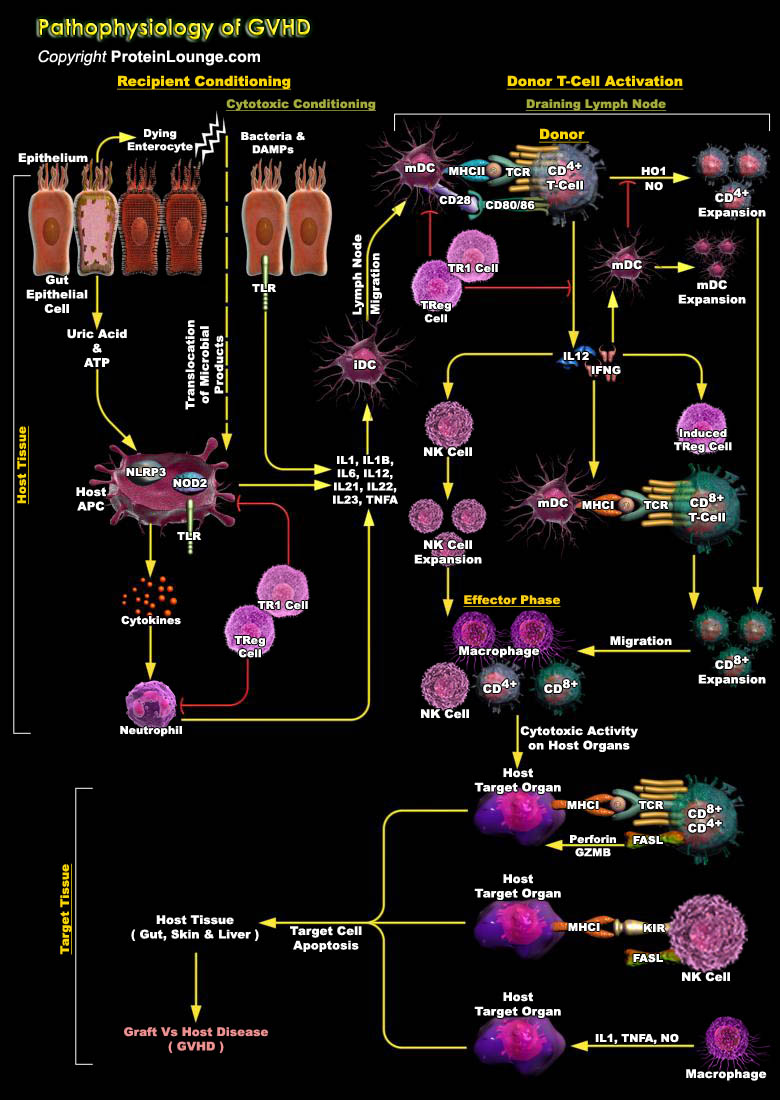
GVHD (Graft-Versus-Host Disease) is the main complication after allogeneic SCT (Stem Cell Transplantation) and induced by donor T cells in the graft. As in physiological T cell responses, alloreactive T cells depend on their activation by APCs (Antigen Presenting Cells). Potential APCs are B cells, monocytes/macrophages,and mainly dendritic cells (DC), the most efficient cells in antigen uptake, processing, and presentation on HLA class I and class II molecules. In HLA-mismatched SCT, HLA molecules are recognized directly by donor T cells with a variable contribution of the HLA-bound peptide, whereas mHA (Minor Histocompatibility Antigens) are the main targets in HLA-identical SCT. These mHA consist of HLA-bound peptides derived from polymorphic proteins that differ[..]
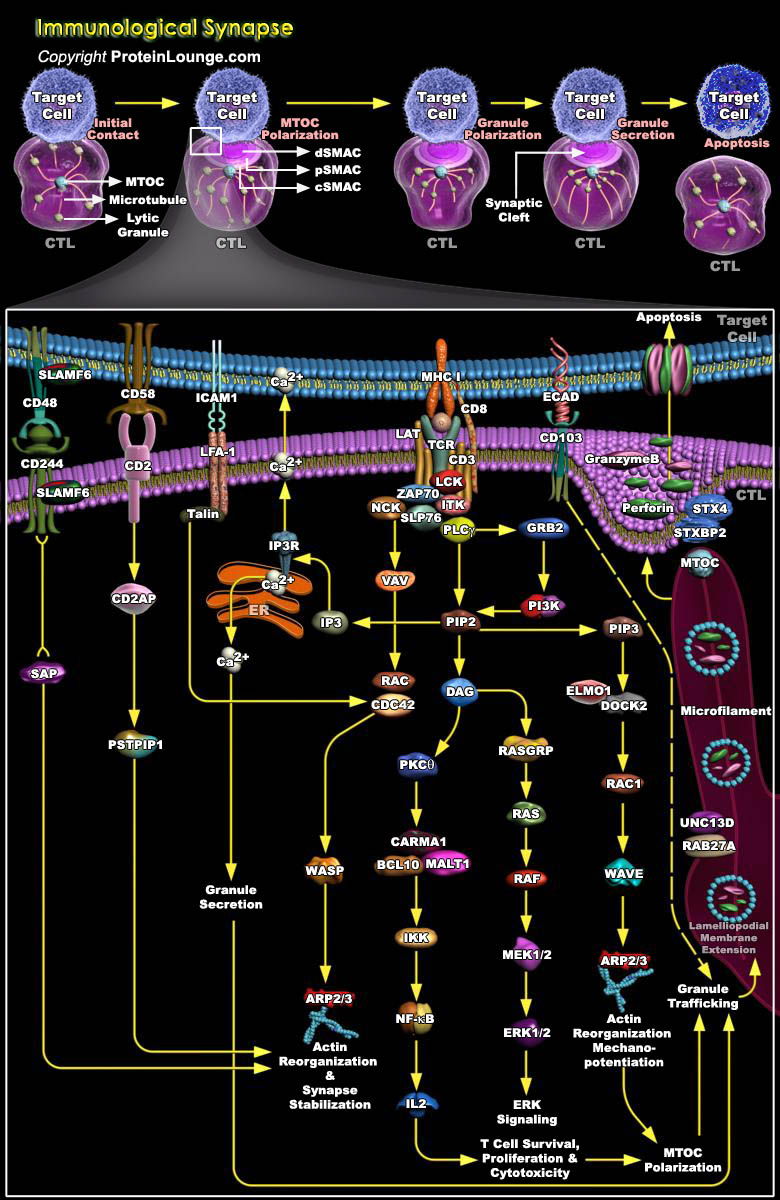
T-cell activation and effector function is mediated by the formation of a long-lasting interaction established between T-cells and APCs (Antigen-Presenting Cells) called Immunological synapse (IS). During T-cell activation, different signaling molecules as well as the cytoskeleton and the endosomal compartment are polarized to the IS. Compartmentalization of interactions at the interface of T and B cells as the central accumulation of T-cell receptor–major histocompatibility complex–peptide (TCR-MHCp) interactions surrounded by a peripheral ring of adhesion molecule interactions. They called these zones, c-SMAC or p-SMAC respectively (central and peripheral supra-molecular activation clusters). The major components of the c-SMAC are key molecules for T[..]
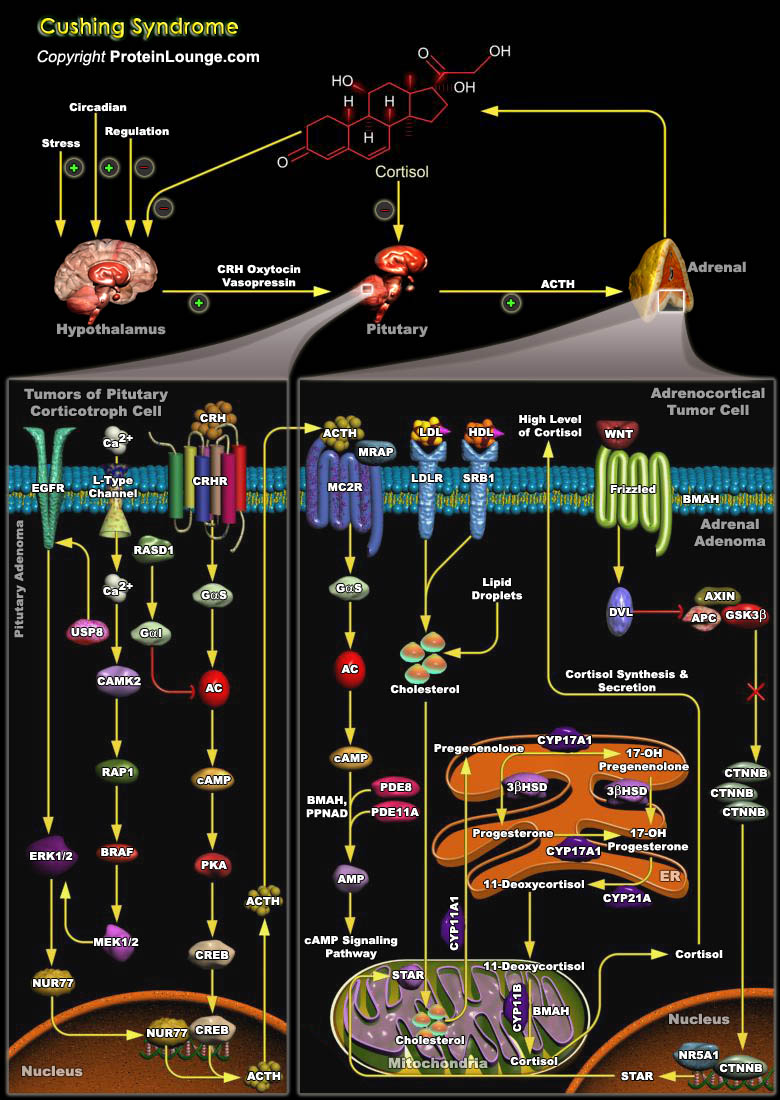
Cushing’s syndrome (CS) has been described for about a century and represents a classical syndrome in endocrinology. Recent years have been marked by progress in elucidating the etiology and the pathogenesis of the disease. Endogenous Cushing’s syndrome is classically divided into corticotrophin (ACTH)-dependent and ACTH-independent hypercortisolism. ACTH-dependent subtype is caused by a pituitary ACTH-producing adenoma, also known as Cushing’s disease (70% of endogenous Cushing’s syndrome). Other cases are caused by ectopic ACTH secretion (10%) from a variety of neuroendocrine neoplasms including para ganglioma,phaeochromocytoma and neuroendocrine tumours of various sites (lung, thyroid, thymus,appendix and pancreas. While ACTH dependent[..]
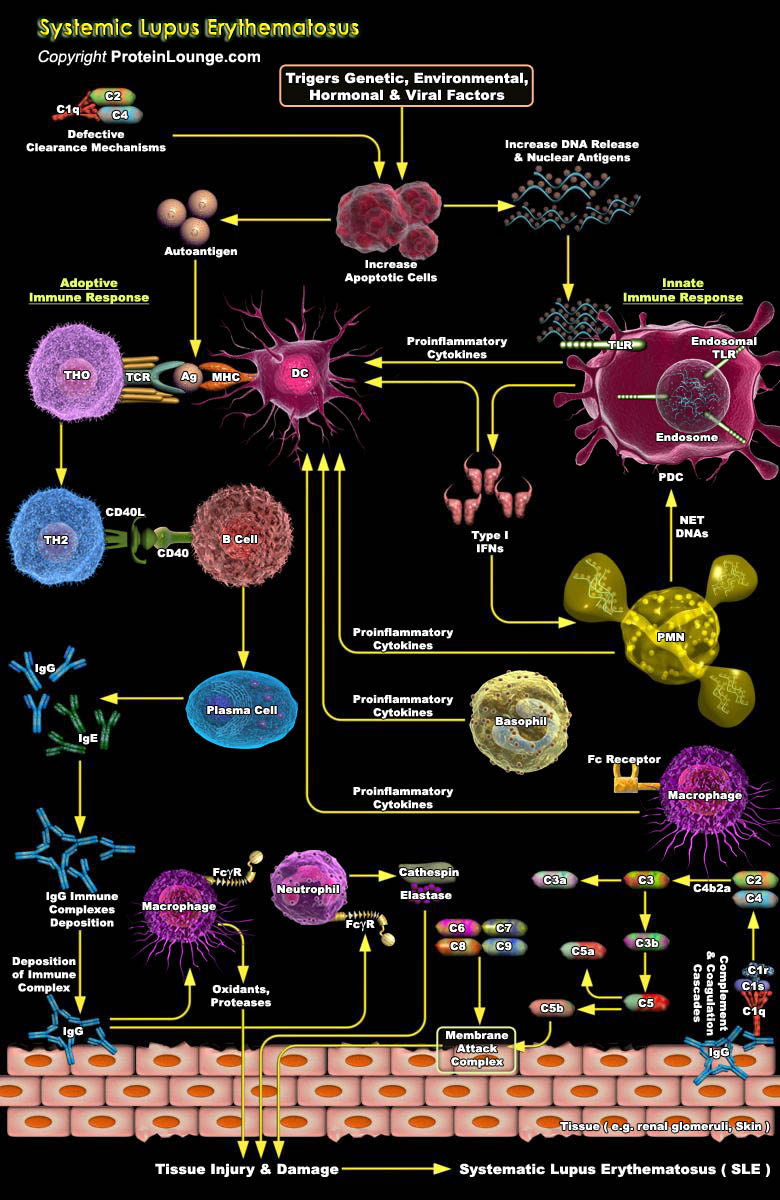
SLE (Systemic lupus erythematosis) is a chronic autoimmune disease characterized by the production of autoantibodies and the deposition of immune complexes, affecting a wide range of organs. A complex interaction of genetics, environmental factors and hormones result in the breakdown of immune tolerance to “self” leading to damage and destruction of multiple organs, such as the skin, joints, kidneys, heart and brain. Both innate and adaptive immune systems are critically involved in the misguided immune response against self-antigens. Dendritic cells, neutrophils, and innate lymphoid cells are important in initiating antigen presentation and propagating inflammation at lymphoid and peripheral tissue sites. Autoantibodies produced by B lymphocytes and immune[..]
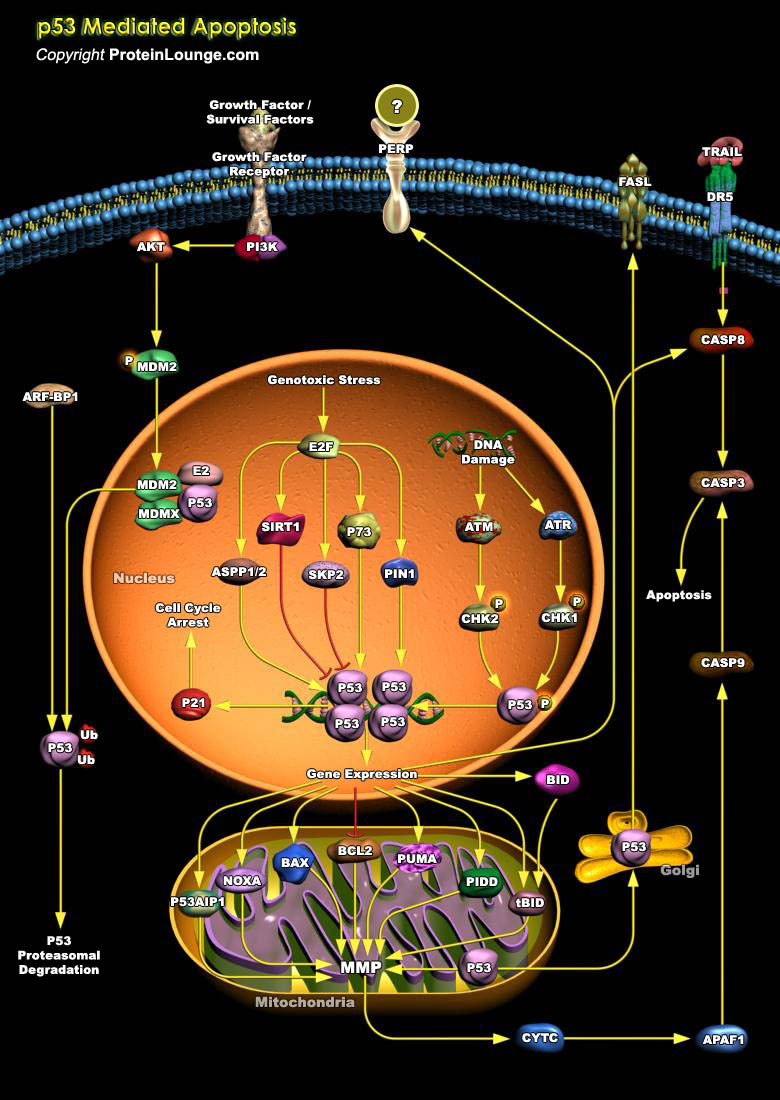
P53, the most extensively studied tumor suppressor, is a regulative factor of many processes necessary for the proper functioning of cells, and it corresponds to a number of processes associated with its life and death. The p53 protein regulates the repair of cellular DNA and induces apoptosis when the damage of the gene is too serious and it is impossible to repair. P53 can be activated by DNA damage, hypoxia, or aberrant oncogene expression to promote cell-cycle checkpoints, DNA repair, cellular senescence, and apoptosis (Ref.1 and 2). There are four conserved domains in p53: N-terminal domain, which is required for transcriptional transactivation, a sequence-specific DNA binding domain, a tetramerization domain near the C-terminal end and a C-terminal domain that[..]
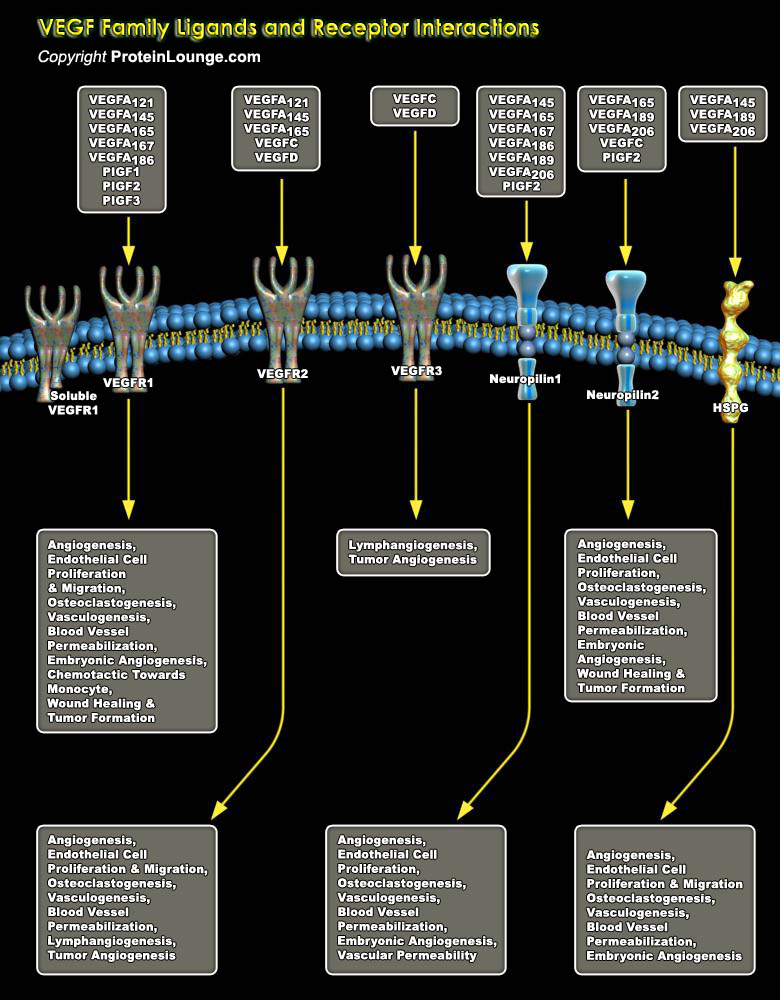
Angiogenesis and lymphangiogenesis, the growth of new blood vessels from preexisting ones, are important processes during embryonic development, tissue growth, wound healing, and several pathological conditions. Several molecules are important for angiogenesis, most important being vascular endothelial growth factor (VEGF) family members and their corresponding receptors. VEGF belongs to the PDGF supergene family characterized by 8 conserved cysteines and functions as a homodimer structure. In mammals, the VEGF family consists of five members: VEGFA, VEGFB, VEGFC, VEGFD, and placental growth factor (PIGF). The human VEGF gene (located on chromosome 6) consists of several exons that can be alternatively spliced to encode several protein isoforms including: VEGF121,[..]
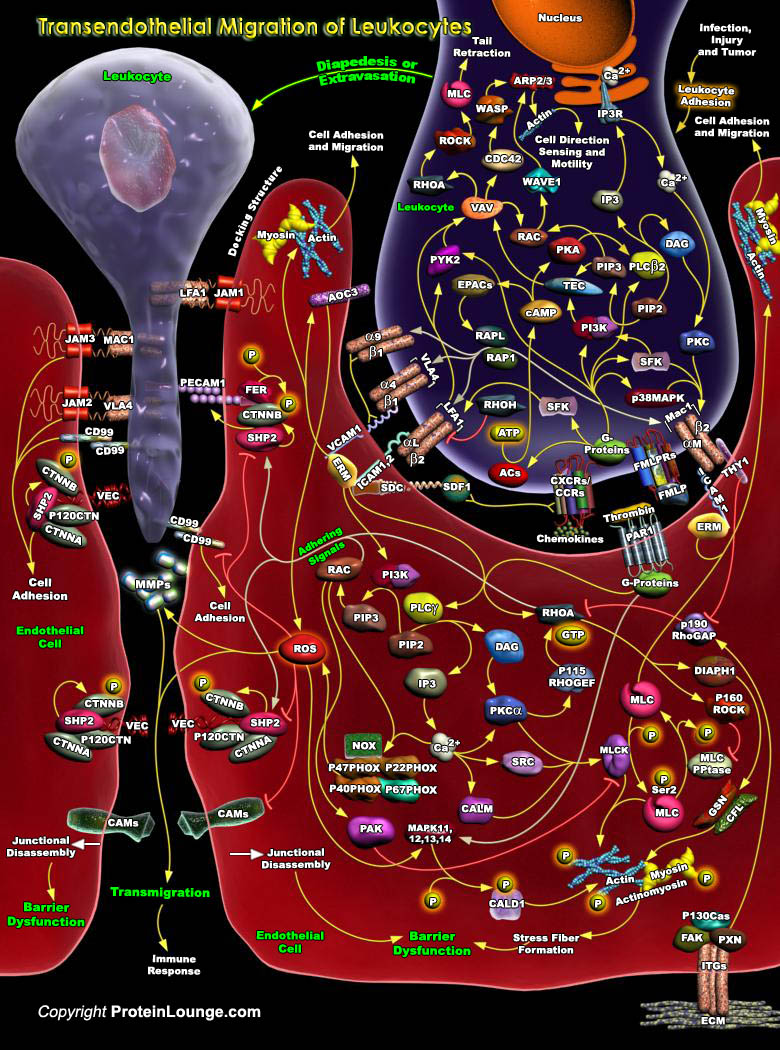
The endothelium functions as a semipermeable barrier, regulating tissue fluid homeostasis and transmigration of leukocytes and providing essential nutrients across the vessel wall. Transport of plasma proteins and solutes across the endothelium involves two different routes: one transcellular, via caveolae-mediated vesicular transport, and the other paracellular, through interendothelial junctions. The permeability of the endothelial barrier is an exquisitely regulated process in the resting state and in response to extracellular stimuli and mediators. The migratory properties of leukocytes or WBCs (White Blood Cells) are indispensable to drive immune responses throughout the body. To ensure migration to the proper locations, the trafficking of leukocytes is tightly[..]
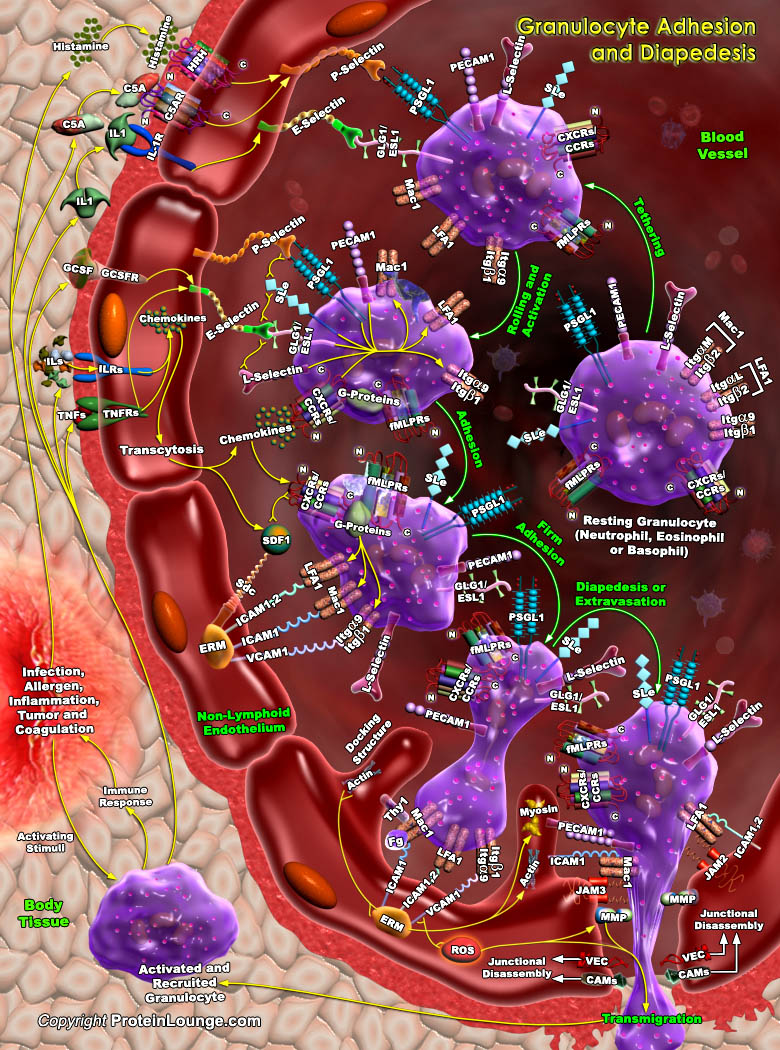
The migration of leukocytes or WBCs (White Blood Cells) from the vascular system to sites of pathogenic exposure is a key event in the process of inflammation. The inflammatory reaction enables the organism to defend itself against infectious microbes. The entry of leukocytes into sites of injury or infection requires molecular mechanisms which enable the leukocytes to recognize such sites from within the vasculature and to form contact with the endothelium in order to exit and migrate through the blood vessel wall. Recognition as well as contact formation is mediated by several cell adhesion molecules which act in a sequential manner in concert with regulatory mediators such as the Chemokines. The cell adhesion molecules which are involved in this process belong to[..]
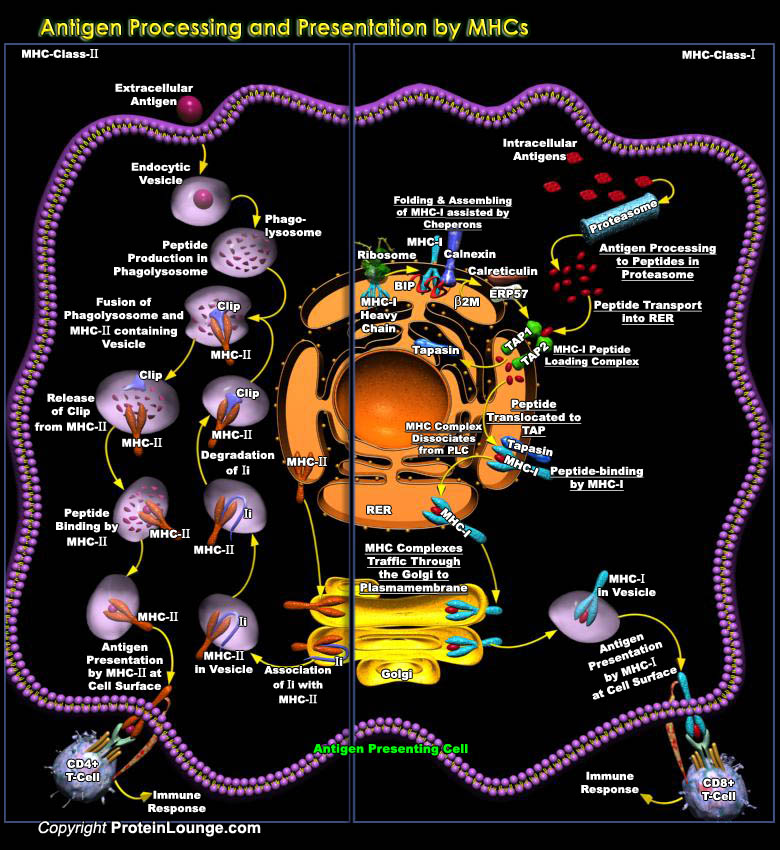
In order to initiate a specific immune response to an infectious agent, the immune system must be able to wade through the sea of molecules that are associated with pathogenic invasion and isolate particular protein products that will sharpen the efforts of host defense. Implicit to this model of counteraction is the processing of an immunogenic peptide epitope (Antigen Processing) and its presentation on the surface of a team of cells, referred to as APCs (Antigen Presenting Cells) (Antigen Presentation). The result of these actions is the induction of a T-Cell response that recruits and engages the other molecular participants of the immune response. Antigen processing and presentation refer to the processes that occur within a cell that result in fragmentation[..]
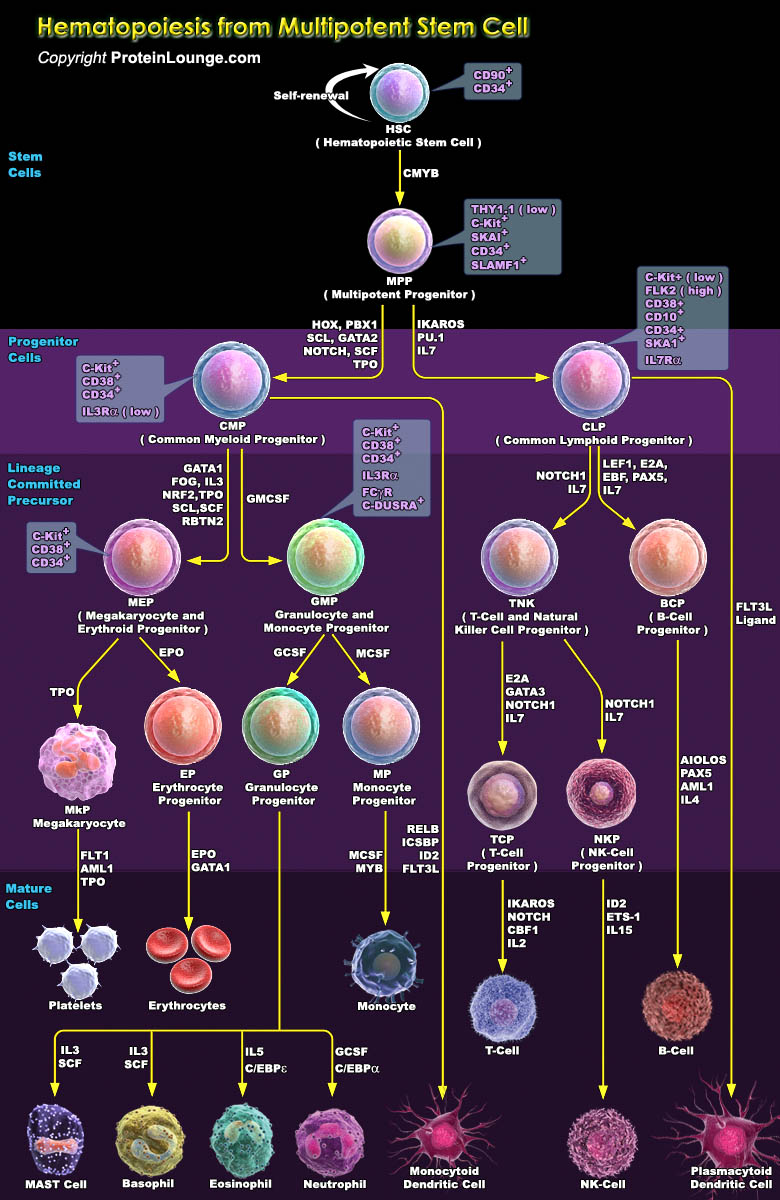
Hematopoiesis is the process that generates blood cells of all lineages (Ref.1). The process of generation of blood cells begins in the early embryo and continues throughout life. Every day, billions of new blood cells are produced in the body, each one derived from a HSC (Hematopoietic Stem Cell). Because most mature blood stem cells have a limited life span, the ability of HSCs to perpetuate themselves through self-renewal and generate new blood cells for the lifetime of an organism is critical to sustaining life. Hematopoietic stem cells are classified into long-term, short-term and Multipotent progenitors, based on the extent of their self-renewal abilities. A key problem in Hematopoietic stem cell biology is how HSC self-renewal is regulated. Signaling cascades[..]
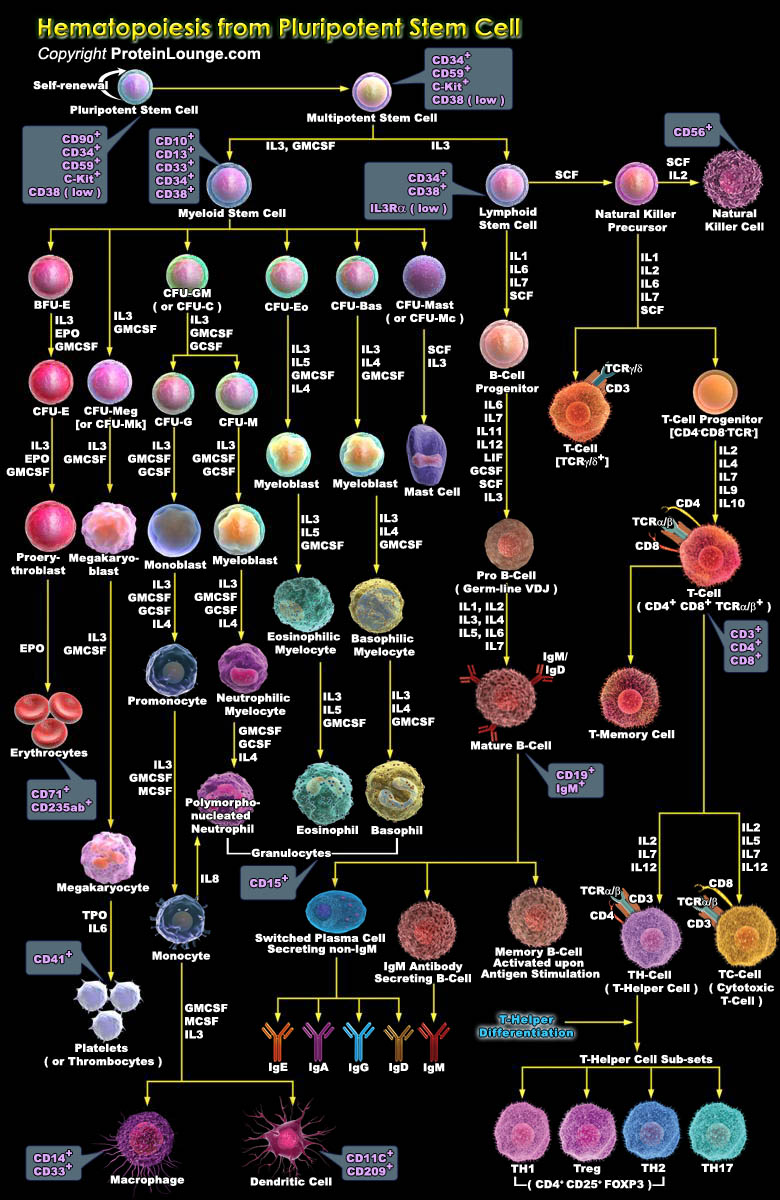
Hematopoietic Stem Cells (HSCs) have the property of self-renewal and through cell division and differentiation, form populations of progenitor cells which are committed to the main marrow cell lines; Erythroid, Granulocytic and Monocytic, Megakaryocytic and Lymphocytic. The earlier progenitor cells are multipotent but, as division and differentiation proceed, later progenitors are formed that are committed to three, two or one cell line (Ref.1 & 2). In the strictest sense depending on potency (i.e., the capacity to differentiate into specialized cell types) stem cells are either Totipotent or Pluripotent. Totipotent cells differentiate into embryonic and extraembryonic cell types, whereas, pluripotent cells are defined as the descendants of totipotent cells which[..]

HSV1 (Herpes Simplex Virus Type-1) is a member of the Herpes group of viruses, the Herpesviridiae, which includes the important human pathogens HSV2, CMV (Cytomegalovirus), Varicella zoster Virus, EBV (Epstein-Barr Virus), HSV6 and 7, and Kaposi's associated Herpes virus, HHV8 (Human Herpesvirus-8). Of these, HSV1 has been the most extensively studied. Human is the only natural host to HSV. The virus is spread by contact and the usual site for the implantation is skin or mucous membrane. Following an initial infection in epithelial cells, the virus spreads to neurons of sensory ganglia, where it becomes latent. The virus emerges sporadically from latency, causing recurrent mucocutaneous lesions. Reactivation of the latent genomes upon stress can lead to re-infection of[..]

